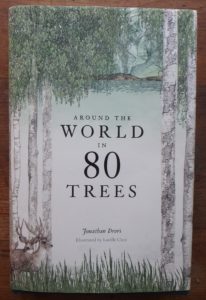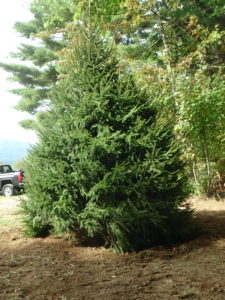Around the World in 80 Trees
I love trees, and find them endlessly fascinating. Each is unique, much as we are. One winter I attempted (and failed) to read all of Michael Dirr’s authoritative Dirr’s Encyclopedia of Trees and Shrubs – all 950 pages of it. I only read about trees that are hardy here, and still only found time to read about half of it.
Recently I found a more manageable project, reading Jonathan Drori’s Around the World in 80 Trees. At just over 200 pages, and nearly half of that illustrations, it gave me the satisfaction of a project easily completed. And it provided countless bits of information that I didn’t know.
For example, I never knew that the great violin builders Stradivarius and Guarneri used Norway spruce for their sounding boards. Apparently Norway spruce, particularly old ones that grew on the mountains of Switzerland, are very dense but lightweight – and perfect for violins.
And alders were important for the development of Venice, Italy. Apparently it is highly resistant to rot if submerged in water. Their engineers drove stakes of alder (9 per square meter) and filled in around them and over them with rocks and broken bricks. Then they built bridges and buildings on them – many of which still are solidly in place, up to 700 years later.
Also the Venetians used alders to make the best charcoal for gunpowder, allowing them to advance militarily. Even today the best gunpowders use charcoal from alders. And I thought alders were junk.
I recently bought some shampoo which touted that it contained “argan oil”. Huh? I’d never heard of argan, and it sounds to me like something from a factory along I-95 in New Jersey. Nope. It is a tree that grows in North Africa.
Argan produces a fruit the size of a plum with a nut inside with 1 or 2 hard, oil-rich seeds. Traditionally women in Algeria and Morocco harvest the seeds and grind them to a pulp and extract the oil. Amazingly, 3 million people depend on the oil for their income. It is used as cooking oil and in cosmetics. And goats love the fruit, often climbing the trees to get at it – despite the numerous thorns on the branches.
Then I read about the tree that produces quinine, Cinchona spp. Originally from Ecuador and Peru, it produces alkaloids that kill malaria parasites in humans, despite the fact that those two countries had no indigenous malaria. But quinine allowed explorers of tropical malarial zones to survive the ravages of this terrible fever.
And of course, quinine is key to the development of the gin and tonic, invented by the British in India. My grandfather got malaria living near the swamps of East Boston in the early 1900’s and probably resorted to quinine when it recurred – which may have given him an excuse for a gin and tonic from time to time.
I was fascinated to learn that the quaking aspen trees (Populus tremuloides) spread largely by root, and that huge forests of this aspen are all connected by roots, and are essentially one tree. The largest living thing in the world, by this definition, is a single quaking aspen that has 45,000 stems and covers 100 acres of ground. The tree, though not any individual stem, is thought to be 80,000 years old. It is the most widely distributed tree in North America – so you probably have one.
As a teen I read a book by Betty Smith called, A Tree Grows in Brooklyn about a family there. She used the tree as a metaphor for the immigrants struggling to grow in poor conditions, as the tree does. The tree in the title is the invasive Tree of Heaven (Ailanthus altissima).
Originally from China, Tree of Heaven was introduced to New York State in 1820. It grows fast, grows most anywhere, and is nearly impossible to get rid of. Cut one down, and the roots send up new shoots all over – even through a crack in the sidewalk. It is hardy to Zone 4 (minus 30 degrees in winter) but I have never seen one here in New Hampshire.
We all know the Eastern White Pine, but I did not know that it sucks up nitrogen from the soil and saves it for use later. And that in so doing, the pine helps to discourage other trees from competing with it.
I also learned that our sugar maples, when grown in Europe, do not have the bright red leaves we love in autumn. Their fall climate is gray and cool, and maples need bright sun and cold nights to get those red colors. Maybe that is why some years our maples are less impressive – if we’ve had a rainy fall.
I visited a friend in Florida this winter, and went to a mangrove swamp. I learned from this book that the red mangrove (Rhizophora mangle) gives birth to live young while they are still attached to the mother tree. The seeds germinate and grow, eventually dropping off as seedlings. Amazing.
So if you’d like an entertaining read, get a copy of Around the World in 80 Trees. There is plenty more to learn.
Henry is the author of 4 gardening books. His e-mail is henry.homeyer@comcast.net.





